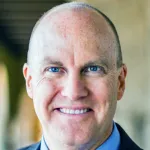
Photo by David Smart, Shutterstock.
Stanford Medicine Scope - August 2nd, 2017 - by Holly MacCormick
The U.S. opioid epidemic is making headline news, and with all the press coverage, it’s tempting to think the problem is finally getting the attention it needs. Yet, as a recent story explains, this couldn’t be farther from the truth.
More people are aware of the problem and effort is being made to reduce the amount of prescription painkillers in circulation, but that only addresses one aspect of the problem — and political action is sorely lacking.
Part of the issue, says Keith Humphreys, PhD, professor of psychiatry and behavioral sciences, is that the opioid crisis is actually two crises — a crisis of “stock” and of “flow.” The Vox piece explains:
On one hand, you have the current stock of opioid users who are addicted; the people in this population need treatment or they will simply find other, potentially deadlier opioids to use if they lose access to painkillers. On the other hand, you have to stop new generations of potential drug users from accessing and misusing opioids.
So far, Congress has only passed one major piece of legislation to address the problem; a bill that appropriates $1 billion to drug treatment over two years. “Crises in a nation of 300 million people don’t go away for $1 billion,” said Humphreys. “This is the biggest public health epidemic of a generation. Maybe it’s going to be worse than AIDS. So we need to go big.”
Anna Lembke, MD, director of the Stanford Addiction Medicine Program also advocated for a “go big” approach to this sprawling problem:
‘It will really require rebuilding communities from the ground up,’ Lembke said. ‘We have to help communities rebuild families. We have to give people meaningful work. We have to give people some opportunity for play — and by that I mean alternative sources of dopamine, so people have something else to replace the drugs or prevent them from turning to drugs in the first place.’
To get to the bottom of the root causes of the opioid epidemic in this country, we must also address chronic pain, pointed out Sean Mackey, MD, PhD, Stanford chief of pain medicine. It’s the reason why many opioid users got hooked in the first place, so part of the solution will require making alternative treatments more accessible to the estimated 100 million adults living in the U.S. who suffer from chronic pain.
Read the full piece for more ideas that, in the words of writer German Lopez, “could save up to hundreds of thousands of people in the next 10 years.”

